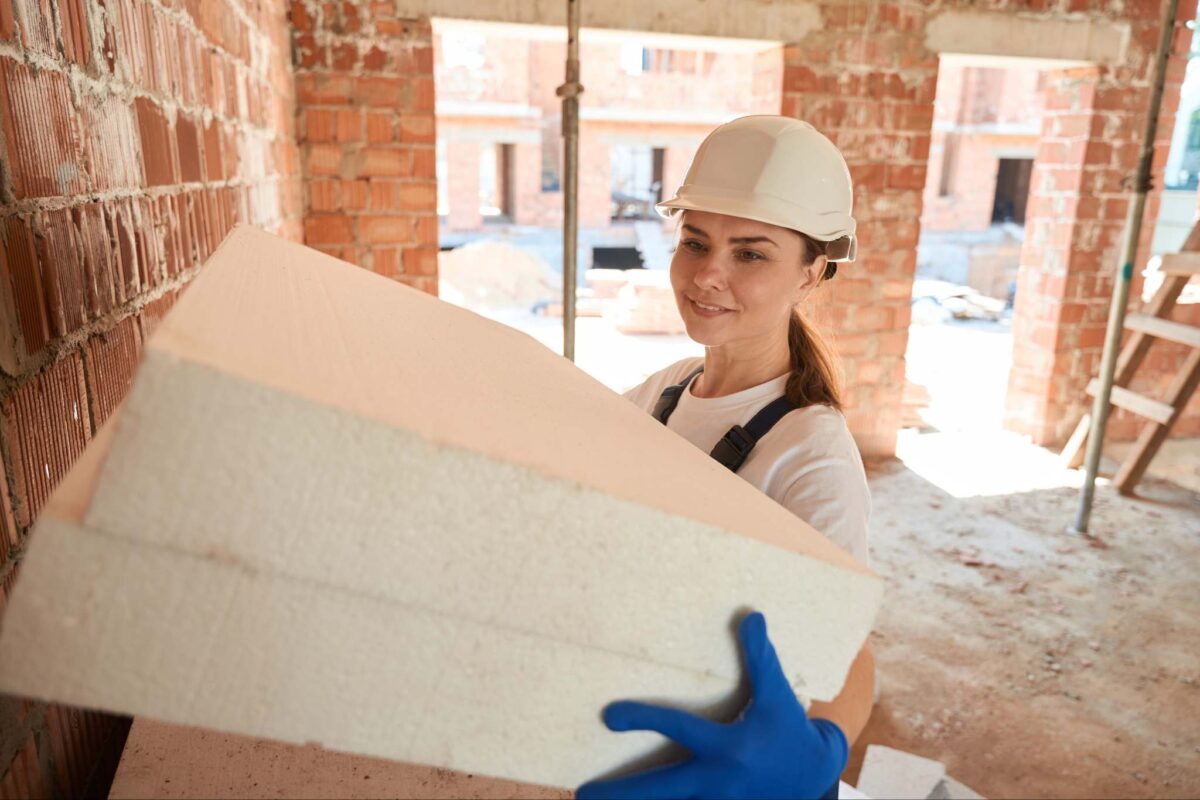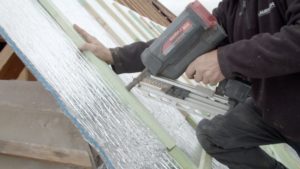Building Insulation Materials Explained

Proper insulation is a vital aspect of building construction. It significantly impacts energy efficiency, temperature regulation, and overall comfort. Selecting the right insulation material can drastically reduce energy costs, enhance indoor comfort, and contribute to a building’s sustainability. This blog will delve into the various types of building insulation materials, their benefits, and their applications to help you make an informed decision for your projects.
Types of Building Insulation Materials
The market offers a wide range of insulation materials, each with unique properties and applications. Understanding these materials’ characteristics will help you choose the most suitable option for your building needs.
Fiberglass Insulation
Fiberglass insulation is one of the most commonly used materials in the industry. It is composed of fine glass fibers woven into a fluffy, wool-like texture. This type of insulation is primarily used in walls, attics, and floors.
Fiberglass insulation offers excellent thermal performance, helping to keep buildings warm in the winter and cool in the summer. It is also relatively inexpensive compared to other insulation materials, making it a cost-effective option for many projects. However, it can be irritating to the skin and lungs during installation, requiring protective gear. Despite its effectiveness, fiberglass insulation is less effective in sealing air leaks, which can impact overall energy efficiency.
Foam Board Insulation
Foam board insulation consists of rigid panels of polystyrene, polyisocyanurate, or polyurethane. It is often used for insulating foundation walls, basement walls, and under slab floors.
This type of insulation provides high R-values per inch of thickness, making it highly efficient in reducing energy loss. Foam board insulation is known for its moisture resistance, which makes it ideal for areas prone to dampness. However, it can be more expensive than fiberglass and may require additional steps for proper air sealing. Despite its higher cost, its durability and thermal resistance make it a valuable investment for many construction projects.
Spray Foam Insulation
Spray foam insulation is a versatile material applied as a liquid and expands into a solid foam. It is typically used in walls, roofs, and difficult-to-reach areas.
This insulation provides superior air sealing capabilities, effectively filling gaps and cracks to prevent air leaks. It offers excellent thermal performance and can significantly enhance a building’s energy efficiency. Spray foam insulation can be more costly upfront but delivers long-term energy savings. It requires professional installation due to its application process, which involves specialized equipment and safety precautions.
Mineral Wool Insulation
Mineral wool insulation, also known as rock wool or slag wool, is made from natural minerals like basalt or industrial by-products. It is available in batts or loose-fill forms and is often used in walls, attics, and floors.
This insulation material is fire-resistant and provides excellent soundproofing properties, making it ideal for both thermal and acoustic insulation. Mineral wool is more resistant to moisture and mold compared to fiberglass. It tends to be more expensive than fiberglass but offers superior fire resistance and soundproofing, making it a preferred choice in specific applications.
Reflective Insulation
Reflective insulation consists of reflective materials, such as aluminum foil, applied to substrates like kraft paper or plastic film. It is commonly used in attics, roofs, and walls where it can reflect radiant heat away from the building.
This type of insulation is particularly effective in hot climates, where it helps keep buildings cooler by reflecting heat. It is lightweight and easy to install, often used in conjunction with other insulation materials to enhance thermal performance. Reflective insulation is less effective in cold climates and works best when paired with other forms of insulation to maximize efficiency.
Key Factors to Consider When Choosing Insulation Materials
When selecting an insulation material, several factors should be considered beyond vapor barriers and membranes:
- Thermal Performance (R-Value): The R-value measures the material’s resistance to heat flow. Higher R-values indicate better insulation performance.
- Moisture Resistance: Some insulation materials naturally resist moisture, while others may require additional vapor barriers to prevent mold and mildew.
- Fire Resistance: Fire-resistant materials can provide additional safety in buildings, slowing the spread of flames in case of a fire.
- Soundproofing: Certain insulation materials offer better soundproofing capabilities, which can be important in residential and commercial applications.
- Durability: The longevity and durability of the insulation material can affect the overall maintenance and replacement costs over time.
- Installation Complexity: The ease or difficulty of installing the insulation can impact labor costs and the time required for installation.
- Environmental Impact: The sustainability of the insulation material, including its production process, recyclability, and overall environmental footprint, is increasingly important.
- Cost: The initial cost of the insulation material and the long-term cost savings from energy efficiency should be considered.
- Health and Safety: Some insulation materials can cause health issues during installation or over time if not properly sealed and maintained.
- Compatibility with Existing Structures: The chosen insulation should be suitable for the specific construction type and compatible with existing building materials.
Advanced Building Insulation: The Power of Aluthermo Quattro
Aluthermo Quattro represents a significant innovation in the insulation market. Unlike traditional insulation materials, it combines reflective, insulating, and vapor barrier properties into a single, multi-layered product. This unique combination provides superior thermal performance, making it an effective solution for reducing heat transfer and energy loss in various applications. Aluthermo Quattro’s design ensures not only insulation but also protection against moisture, enhancing the overall efficiency and durability of the insulation system.
The composition of Aluthermo Quattro includes four distinct layers: two external reflective aluminum layers, a polyethylene foam layer, and a bubble layer. These layers work together to create a highly effective barrier against heat loss and moisture infiltration. This multi-functional use makes it suitable for roofs, walls, floors, basements, and attics. The integrated vapor barrier and reflective layers simplify installation and improve overall building efficiency.
- Composition: Four layers (two reflective aluminum layers, one polyethylene foam layer, one bubble layer)
- Thermal Performance: Excellent at reducing heat transfer and energy loss
- Moisture Resistance: Acts as an integrated vapor barrier
- Durability: Long-lasting with high resistance to environmental factors
- Application: Suitable for roofs, walls, floors, basements, and attics
Know more about Quattro’s R-Values
Comparing Building Insulation Materials and Quattro
| Insulation Material | R-Value per Inch | Durability | Fire Resistance | Soundproofing | Moisture Resistance | Air Sealing Capabilities | Application Suitability |
| Fiberglass | 2.2 – 2.7 | Moderate | High | High | Low | Moderate | Walls, Attics, Floors |
| Foam Board | 3.6 – 8.0 | High | Moderate | Moderate | High | Good | Foundation Walls, Under Slab Floors |
| Spray Foam | 3.5 – 6.5 | High | Varies | Excellent | High | Excellent | Walls, Roofs, Hard-to-Reach Areas |
| Mineral Wool | 3.0 – 3.3 | High | Excellent | Excellent | High | Moderate | Walls, Attics, Floors |
| Reflective | 1.0 – 1.3 | Moderate | Moderate | Low | High | Low | Attics, Roofs, Walls (hot climates) |
| Aluthermo Quattro | Varies by application | High | High | High | High | Excellent | Roofs, Walls, Floors, Basements, Attics |
Why QUATTRO Insulation is the Smart Choice for Your Project
Aluthermo Quattro is a comprehensive solution combining insulation, reflective, and vapor barrier properties in one ultra-thin design. Its superior thermal performance and moisture protection make it an excellent choice for various applications. Aluthermo Quattro simplifies installation and enhances overall building efficiency, ensuring a durable and effective insulation system.
Upgrade your insulation with Aluthermo Quattro for superior performance. Learn more and request a quote!


